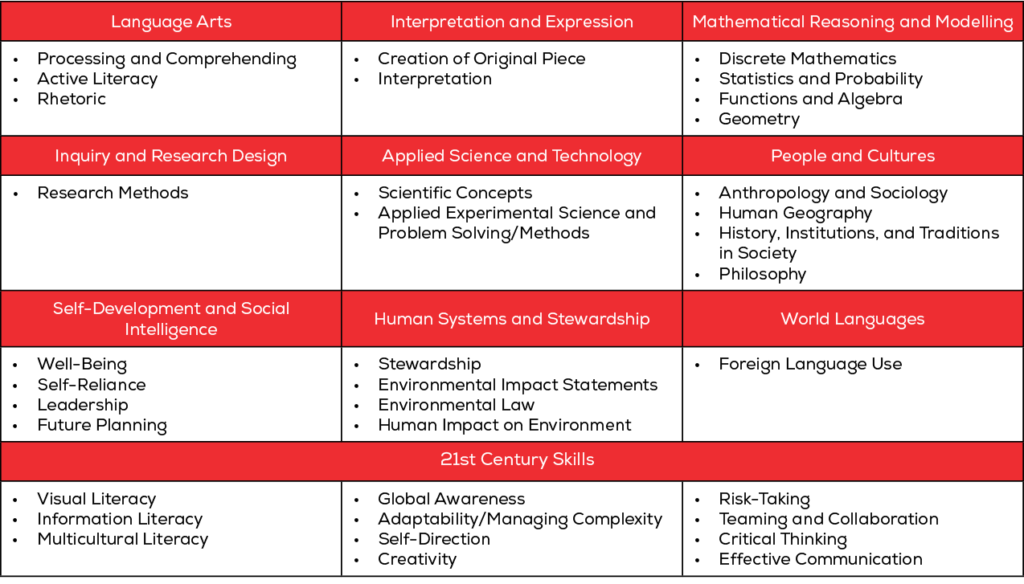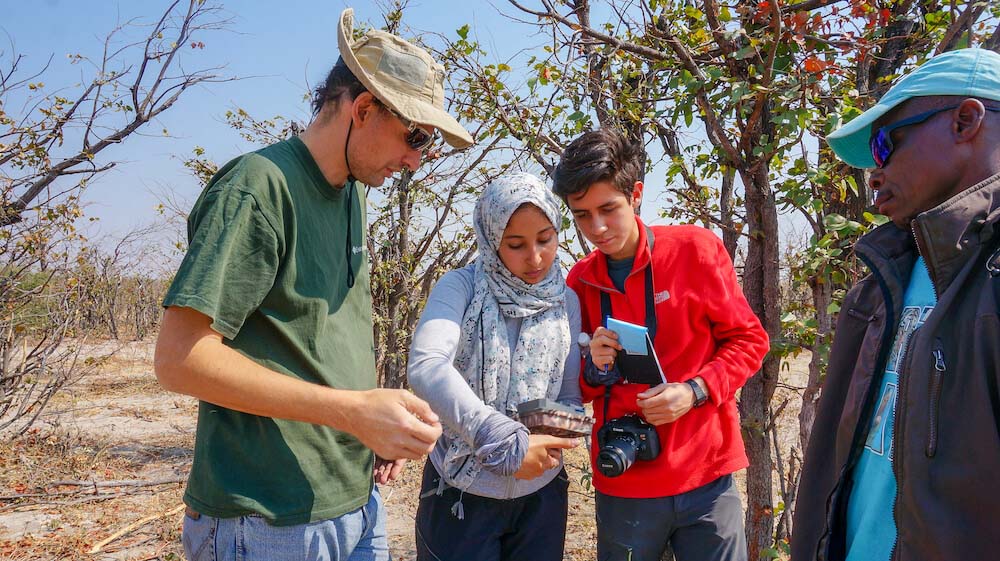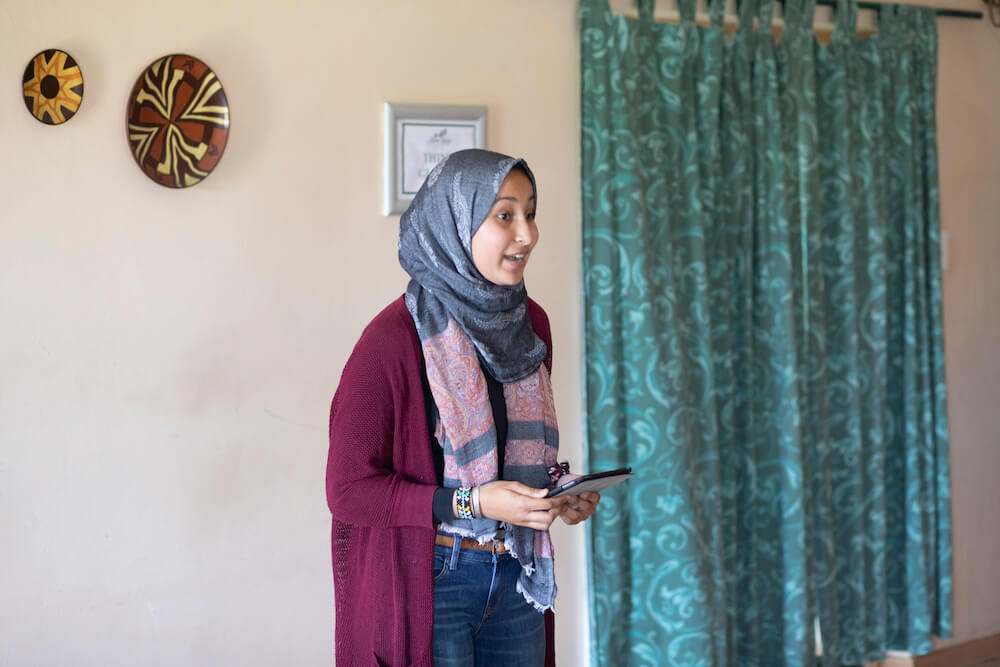As I write this, I'm waiting for our students to return from their weXplore, a five-day excursion that takes students beyond their host city for immersive cultural experiences. For the past two months, we as a school have called Maun, Botswana, our home. It's a small town on the edge of the Okavango Delta and, for many travelers, a doorway into Africa. But Maun is only one perspective, and it...
Read MoreNew students arriving at THINK Global School are in for a world of new experiences, as our Changemaker Curriculum is drastically different than the traditional curricula used at most high schools. Rather than sitting in classrooms while being instructed by a teacher, students at THINK Global School are expected to demonstrate agency and autonomy, working in teams to craft innovative solutions to our country-specific modules. They are also encouraged to explore their passions through a near-infinite array of personal project subjects, gaining relevant 21st-century skills in the process.
So how does the Changemaker Curriculum work?
In this post, we’ll explore the various facets that make up the world’s most innovative learning approach.
Learning Targets
Integral to teacher-led modules and personal projects are learning targets, which form the backbone of the Changemaker Curriculum. At their core, learning targets provide a measuring stick against which our students can assess their acquisition of knowledge. To put it more simply, our learning targets provide a clear statement of what the student and their educators wish to accomplish during a project, while still allowing the student to maintain ownership of their learning.
Including 21st century skills (skills to be applied to our host countries and the world), there are ten different categories containing many subcategories of learning targets, which collectively represent a broad spectrum of learning. Considering projects at THINK Global School are multidisciplinary, they typically consist of learning targets from numerous categories.
The Learning Targets categories and subcategories are:

Each of these subcategories is made up of numerous learning targets, and there are 122 learning targets in all. All students must achieve the rank of novice in all of our learning targets, the rank of specialist in 70% of our learning targets, and complete one mastery project to meet the graduation requirements for THINK Global School. These standards ensure that every TGS student receives a comprehensive education while also allowing them to focus on the learning targets and relevant skills they genuinely care about.
You can find a more in-depth look at learning targets here.
Modules and Personal Projects
In each country they visit, students select from one of three teacher-led modules (TLM) that tie these educational concepts together while incorporating themes that are highly relative to the local surroundings. Each of these modules is team-based and asks students to answer a driving question, with assessment focused on the project’s outcome.
An example of a TLM is our Conservation & Storytelling module, which takes place in Botswana and asks students to answer the following driving question: How does Botswana’s government track the density and movement of wildlife in the Greater Okavango Delta? In this module, students work with local conservation experts to recognize animal tracks, sight predominant species, and identify vegetation in Northern Botswana, with the collected data submitted to a long-term conservation study sponsored by the government of Botswana. At the end of the module, students draw on their storytelling skills to present their scientific research during a public showcase.
In addition to teacher-led modules, the Changemaker Curriculum provides students the agency to engineer projects of their choosing, allowing them to explore the themes and topics they are genuinely passionate about. Each term students are encouraged to engage in 3-5 personal projects, and these projects can be spread across whatever timeframe the student sees fit; if they’d like to scratch the surface on a subject, they might complete it in one term, but if it is a subject they are passionate about they might spread it across an entire school year, demonstrating to their mentor growth and skill mastery as they go along. Examples of student personal projects can be found here.
For personal projects, students collaborate with a mentor to determine the project’s scope and driving question, laying out their expectations in what is known as an excellency paragraph. Upon the project’s completion, the student and educator will review the work and assign grades based upon quality of work and whether expectations and learning targets were met. If a student demonstrated significant progression in a particular learning target, the mentor can decide to increase their rank in it. As mentioned in the learning targets section, learning target rank progression goes from novice to specialist to master.
Mastery Projects
If a student wishes to continue building up their expertise in a particular theme or learning target, we actively encourage them to do so. And for subjects they are truly passionate about, they might consider basing their mastery project around them, a requirement for graduation. Mastery projects provide a way for students to take a comprehensive, self-directed look at an issue. Students who enroll at THINK Global School in the 10th Grade are required to complete two mastery projects before graduation, while students who enroll at THINK Global School in the 11th grade are required to complete just one.
To complete a mastery project, students:
- Define an area of interest or identify a problem
- Craft a driving question to answer
- Identify community experts to guide their efforts and provide critical feedback
- Receive project approval from the Mastery Project Committee
- Present and defend their conclusions
- Celebrate their successful defense via a Mastery Ceremony
We believe that by building towards mastery during their time at THINK Global School, students will be better positioned for success at university and equipped with the 21st-century skills necessary to make a difference in our rapidly evolving workplace.
Assessment: Excellency Paragraph and Narrative Reports
Excellency Paragraph
To assess their expectations for excellence in regards to module work and personal projects, students, together with educators and mentors, design criteria for their rubrics at the start of the term, after which students individually define what excellence means to them for that specific assignment. Students then use these excellency rubrics to determine their grades at the end of the term, in consultation with their educators and mentors.
For example, let’s look back at our Botswana module centered around conservation and storytelling. At the start of the term, students and educators identify the essential elements of storytelling. Their rubric elements might look like this:

With these elements identified, each student sits down and writes an excellency paragraph detailing what they would like to accomplish during the term in their teacher-led module and for each of their personal projects.
At the end of the term, each student is asked to reexamine their excellency paragraph and reflect on their work and achievements during the term, and score themselves based on whether they think they met what they would consider excellency. This student reflection, along with an advisory comment, helps provide a detailed look at each student’s academic development and personal growth over their time in country. Although we do have letter grades assigned at the end of each module, these are decided on by the student and based on a critical assessment of their excellency rubrics. This is because we believe that removing a teacher-assigned letter grade makes the student more willing to risk failure and see what happens when they are ready to engage in their coursework without inhibitions — to worry not about the letter grade, but the intellectual pursuit of learning.
Narrative Reports
At the end of the term, each student’s narrative report paints a comprehensive picture of the student’s time in country and what they have learned. The report covers the student’s academic achievements based on their associated learning targets, advisory comments that detail the student’s emotional, social, and well-being in general, and the student’s reflection on their excellency that term. These reports are typically around eleven pages long and focus on feedback that will help the student to continue developing in subsequent terms.
The report is laid out like this:
-An introductory paragraph
-An advisory comment
-Module learning target attainment and student excellency review
-Student-led project target attainment and student excellency review
-Overall Student Reflection
Rather than simply relaying a grade to the parents and student as was done in years past on report cards, the narrative report paints a complete picture of the student’s time in country, establishing areas for continued growth and highlighting recent successes. It’s a vital part of our transition to focusing on the whole student, and not just their test scores. You can find a sample Botswana narrative report here.
Apply today
Does a student-centered education sound like the right fit for you or someone you know? You can learn more about what we look for in a candidate on our admissions page.

